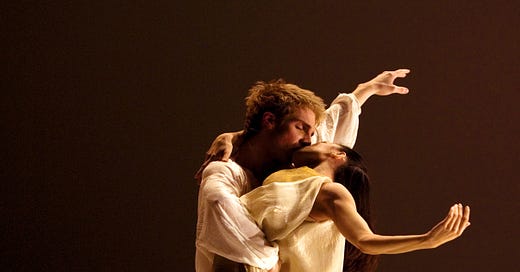
I have a vivid memory of a Saturday matinee at Seattle’s McCaw Hall.
I’m fairly certain the date was February 1, 2008. I know for sure it was the first time I saw Pacific Northwest Ballet perform Jean-Christoph Maillot’s gripping version of Romeo et Juliette. Once you see that ballet you never forget it,
I was spellbound, from the first appearance of former principal dancer Olivier Wevers as Friar Laurence, to the last scene when Lucien Postlewaite’s Romeo kills himself because he believes his Juliette, Noelani Pantastico, is dead.
Like most educated adults, I know Shakespeare’s classic tragedy well. I’ve seen many stage productions, Franco Zeffirelli’s 1968 film version starring Olivia Hussey and Leonard Whiting (a junior high school field trip), ballets set to the Tchaikovsky score, even both West Side Story movies.
But I’d never seen a story ballet like this one, with the muscular 20th century Prokofiev score played so well by PNB’s orchestra, its gorgeous Jerome Kaplan costumes and its lean, abstract set designed by Ernest Pignon-Ernest.
I felt like I was immersed in a movie, shocked by the ending, even though I knew the romance would not end well.
17 years later I felt exactly the same when the curtain came down on PNB’s latest production of Maillot’s Romeo et Juliette.
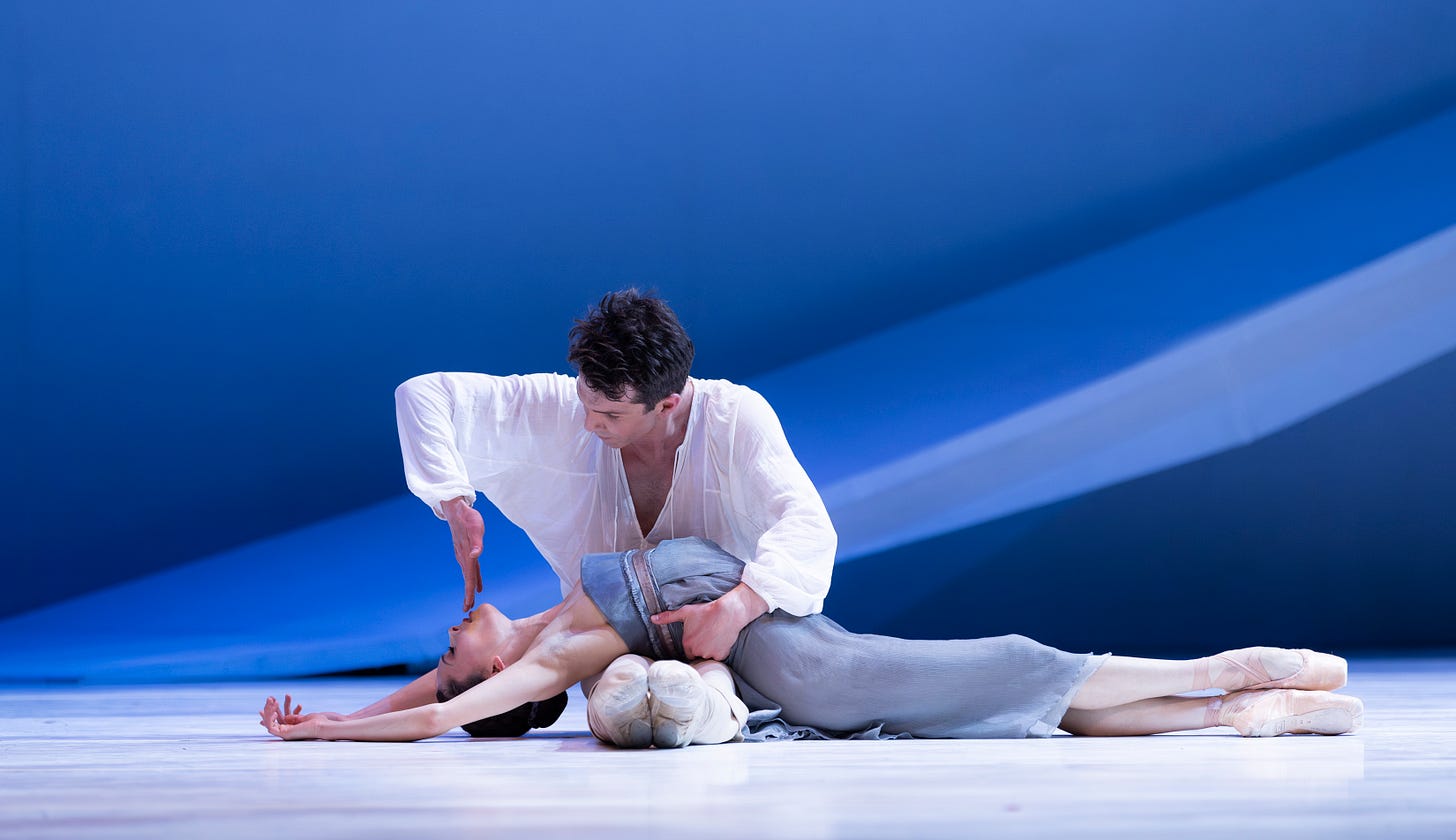
I cried again when this Romeo (a masterful Postlewaite now, 17 years later, in complete control of both the choreography and his dramatic artistry) committed suicide after he saw his Juliette lying as if dead. When she awakened from a drug-induced deep sleep to see her Romeo dead, then killed herself, I was shocked all over again. I get chills just writing this.
When the curtain came down a few minutes later, the audience was hushed; it felt almost heretical to applaud. Rows of audience members stood and did clap, but mostly we wanted to honor Postlewaite and the debut of his new Juliette, PNB soloist Clara Ruf Maldonado, with our standing ovation. Maldonado held us in the palm of her hand from the first appearance of her own hand, wiggling her fingers to her Nurse, the excellent PNB principal Sarah-Gabrielle Ryan.
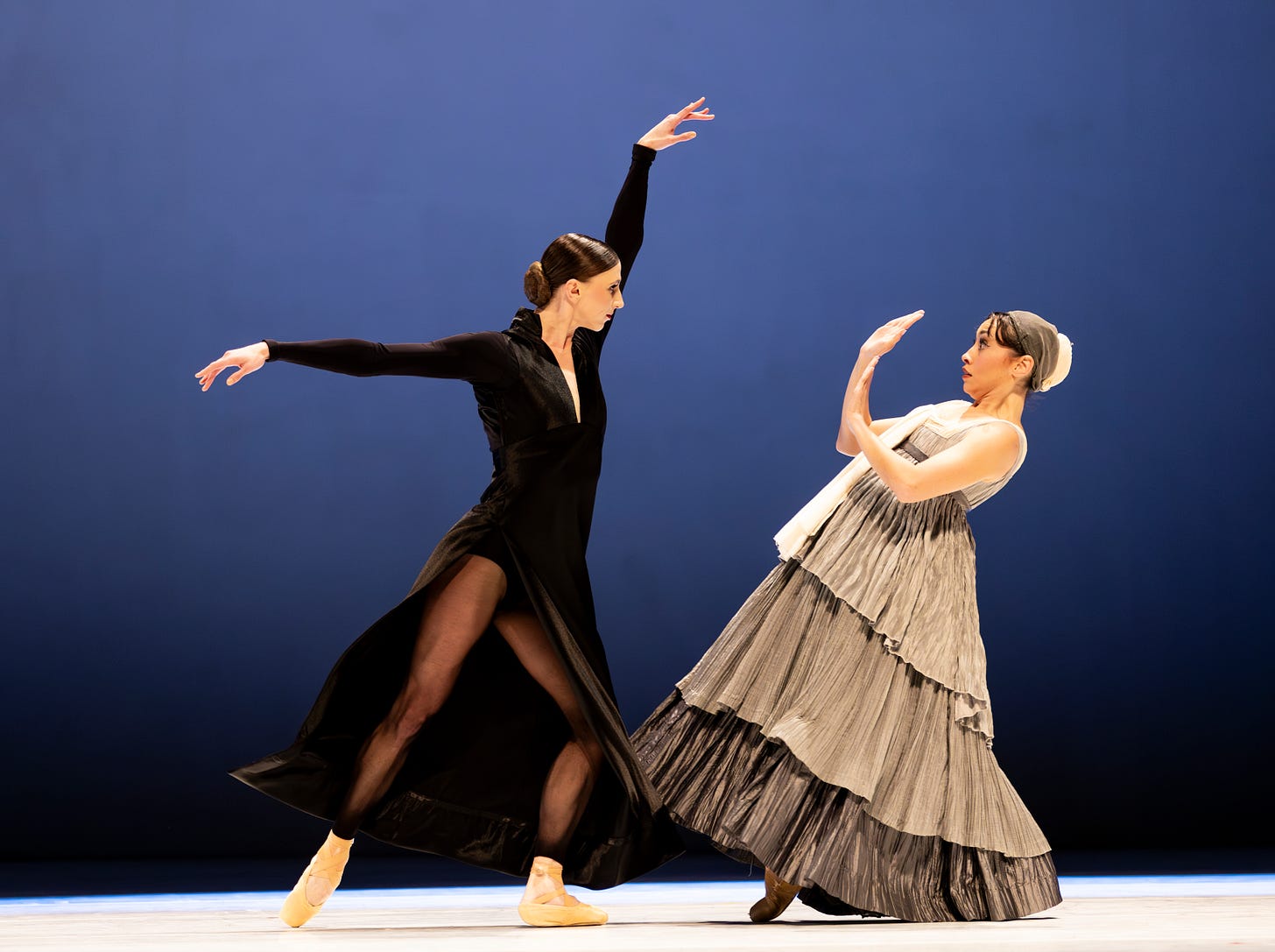
I can’t count how many times I’ve seen Maillot’s version of this Shakespearean tragedy at PNB since 2008, but the one that opened Friday, April 11, 2025, is among the best.
That’s partially due to Pantastico’s off-stage role this year as one of the ballet’s stagers at PNB. According to a PNB spokesperson, her main job was coaching the Romeo and Juliette couples. Her husband Bruno Roque supervised the overall recreation of Maillot’s choreography.
The two met while both were members of Maillot’s company, Les Ballets de Monte Carlo. PNB was lucky to have the them in the house to infuse the Seattle production with both the finer points of the choreography as well as the deep emotions that underpin the story.
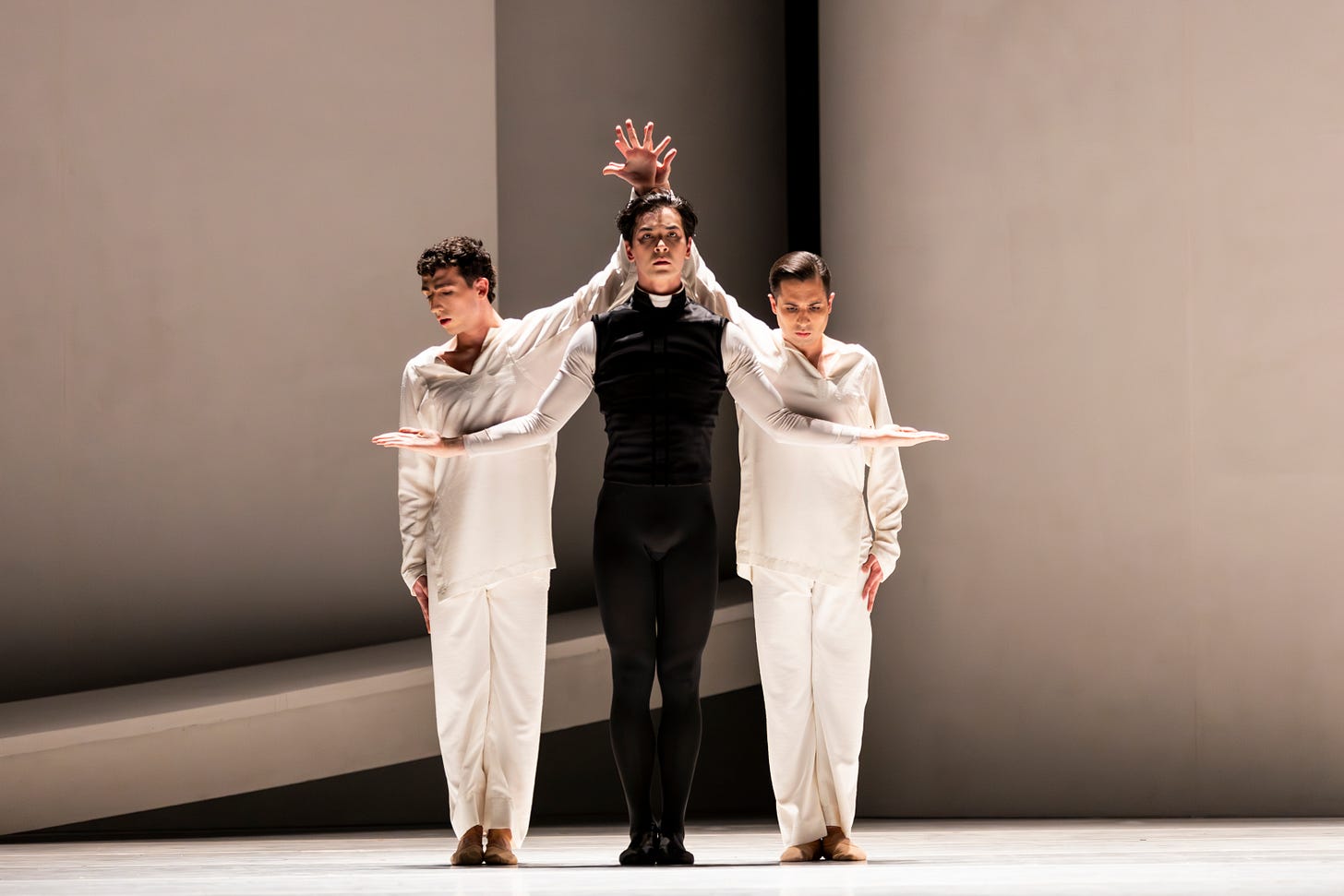
The other reason I loved this production so much was the stellar cast. From Postlewaite’s deft Romeo to Christopher D’Ariano’s almost mythic portrayal of Friar Laurence, who has the power to take the audience beyond the action we see on stage to show us its underlying rhythm and reason, I was held captive by PNB’s fine dancers. Elle Macy was a hypnotic Lady Capulet, grieving first Jonathan Batista’s dead Tybalt (what exactly is their relationship??), then the death of her own daughter.
Casting choices, PNB tells me, are finalized by Maillot’s team, although after 17 years of collaboration between the choreographer, his company and PNB Artistic Director Peter Boal, I imagine Maillot and his team trust Boal’s choices. Whatever it was, every dancer stood out for me.
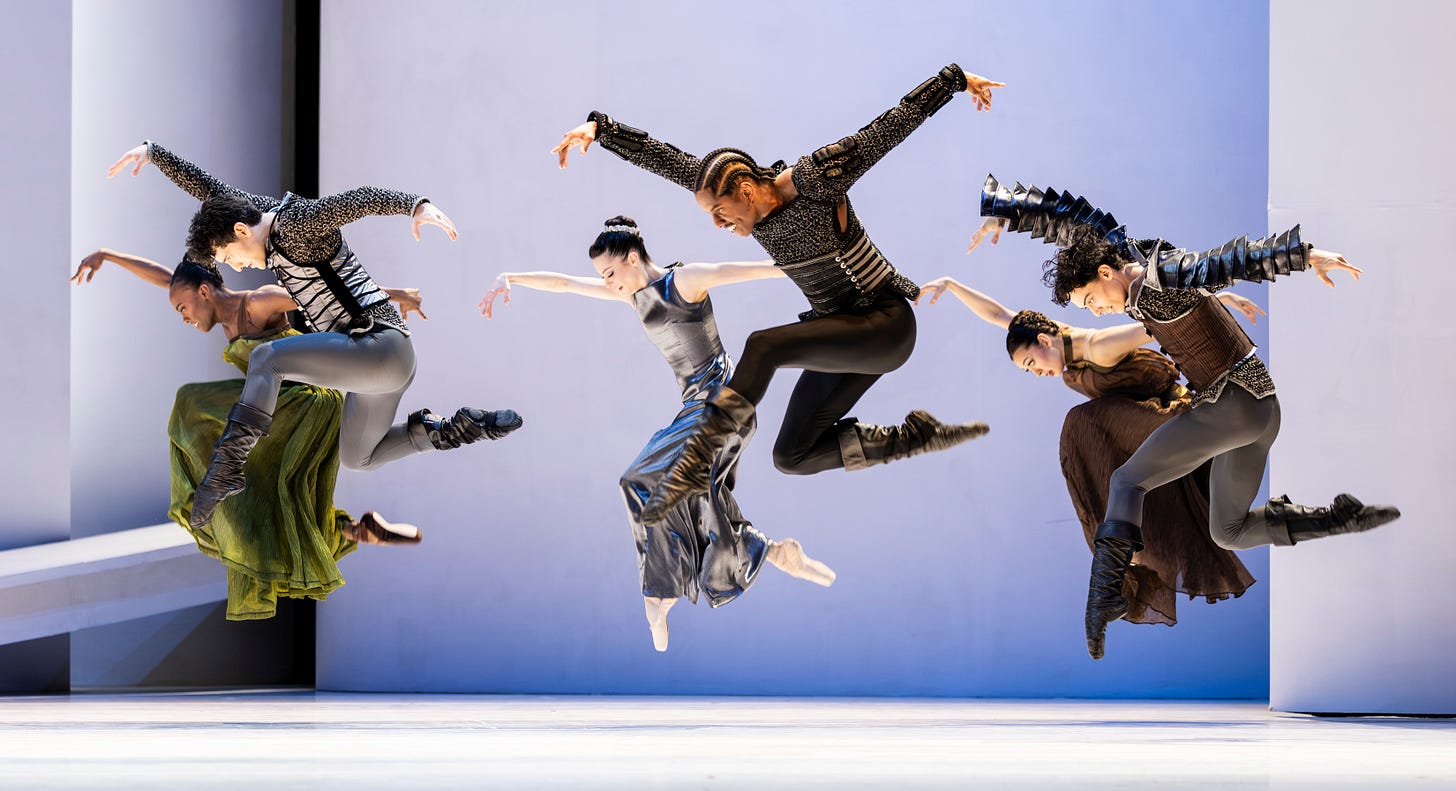
I could single them out one by one: Kyle Davis and Christian Poppe as Mercutio and Benvolio; Noah Martzall and Ryan Cardea as Friar Laurence’s acolytes; all the Montagues and Capulets.
But the ballet is called Romeo et Juliette for a reason. If we can’t feel the couple’s new love, their chemistry in the most romantic of pas de deux that ends Act 1—the giddy excitement of what will become a doomed romance—we won’t open our minds and hearts to Shakespeare’s story.
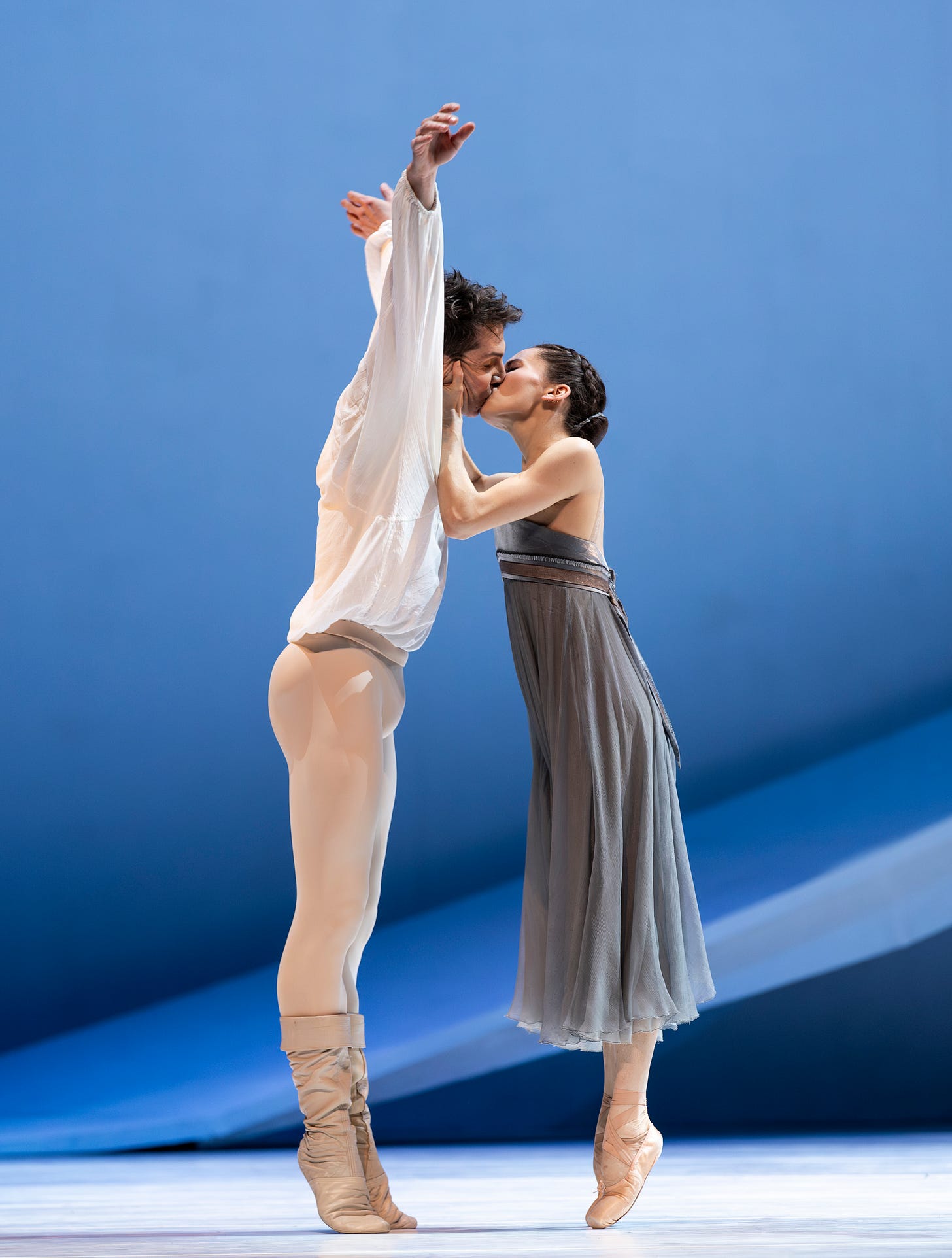
And that’s why PNB was lucky to have Roque and Pantastico as stagers, and to have Postlewaite bring his years of experience to this performance. He and Pantastico spent five years together together in Monte Carlo. They took their Romeo et Juliette around the world, so when they both returned to Seattle, Romeo et Juliette was in their blood. Lucky us!
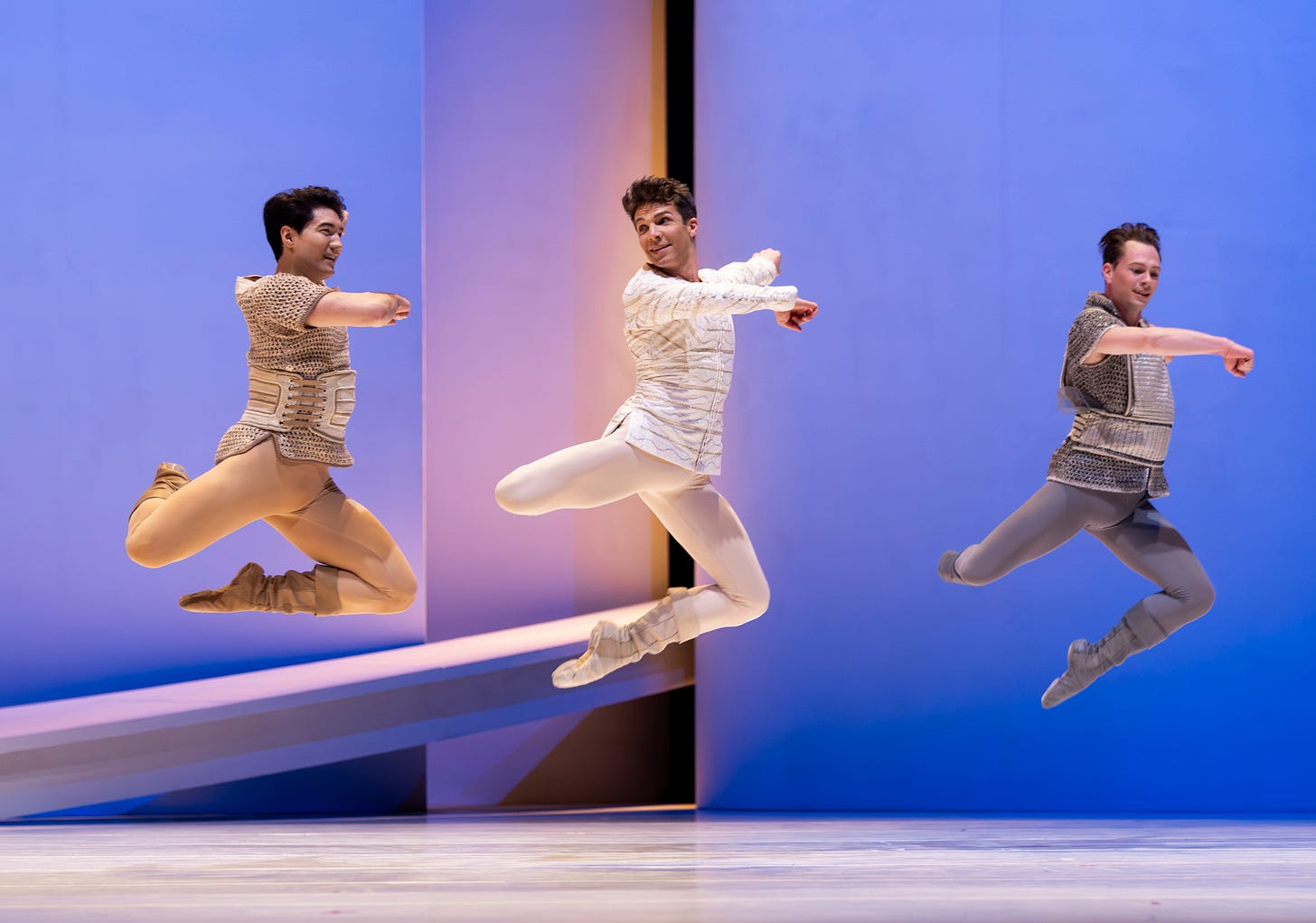
PNB last presented Romeo et Juliette just before Pantastico’s retirement from the company in early 2022. She danced Juliette, what had become her signature role, opposite James Yoichi Moore, who originated PNB’s Romeo in 2008 in rotation with Postelwaite.
Moore retired in June 2024; Postlewaite is still a principal dancer, but he’s also an unofficial mentor to the other young men who are learning the role, including fellow principal Dylan Wald, who will alternate in it, and to his Juliette, Clara Ruf Maldonado, whose shimmering debut performance owes as much to absorbing her partner Postlewaite’s experience as it does to her innate artistic and technical abilities.
I admit to loving Maillot’s deft storytelling enough that I’d admire it no matter the cast. The combination of Prokofiev’s great score, Maillot’s unique choreography and Shakespeare’s classic tragedy are almost impossible to beat. What I truly love is its power to make me feel the joy, the love and the grief as if the dancers were performing their own stories for me.
I can’t wait to see Wald and Angelica Generosa take on the lead roles (both are debuting in them), to watch Luther DeMeyer as Friar Laurence and Leta Biasucci dancing the complicated role of Lady Capulet. What I’m saying is no matter what show you choose (Thursday 5/17-Sunday 5/20 at Marion Oliver McCaw Hall) you’ll leave the theater a witness to an accomplished ballet company, and in awe of the power of a great dance drama.


